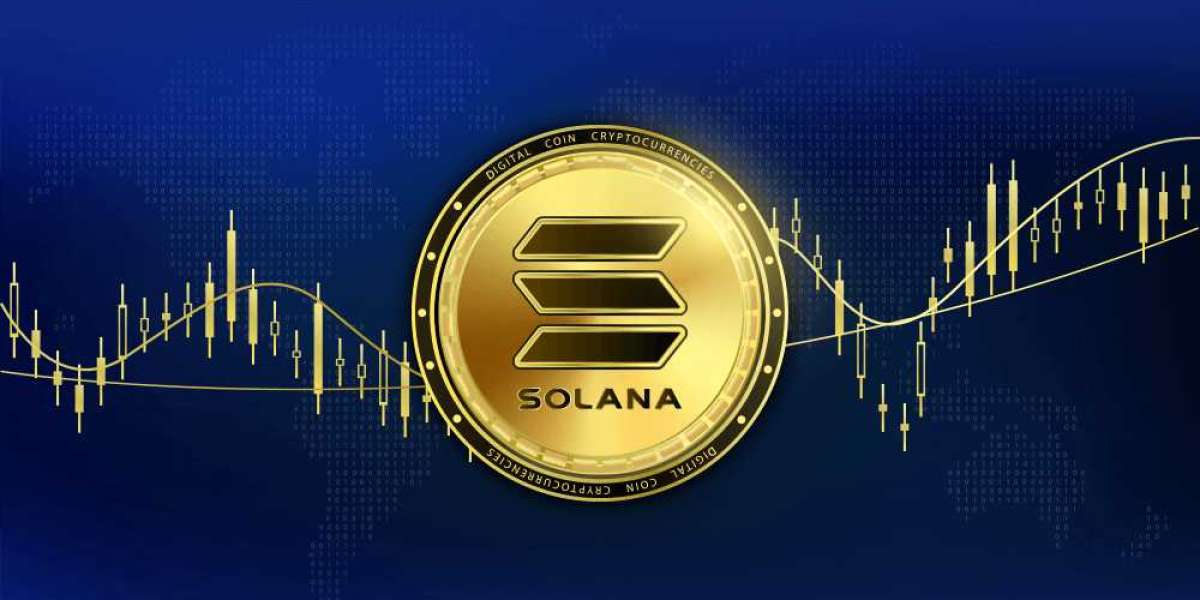Solana, a high-performance blockchain renowned for its speed and low transaction costs, has fostered a vibrant ecosystem of decentralized exchanges (DEXs). These Solana exchanges empower users to trade digital assets in a non-custodial and permissionless manner, directly interacting with the blockchain. This blog post will delve into the intricacies of the Solana exchange landscape, exploring its key players, advantages, challenges, and what the future might hold.
Why Solana is a Fertile Ground for DEXs
Solana's technical architecture makes it exceptionally well-suited for decentralized trading:
- High Throughput: Solana boasts significantly higher transaction speeds compared to many older blockchains, theoretically capable of processing tens of thousands of transactions per second (TPS). This is crucial for providing a smooth and responsive trading experience, akin to centralized exchanges.
- Low Transaction Fees: The cost per transaction on Solana is remarkably low, often fractions of a cent. This eliminates a significant barrier to entry for frequent traders and makes micro-transactions economically viable.
- Fast Block Times: Solana achieves very short block times (around 400 milliseconds), ensuring rapid transaction confirmation and faster settlement of trades.
- Scalability: Solana's innovative Proof-of-History (PoH) consensus mechanism, combined with other architectural optimizations, allows for high scalability, accommodating a growing number of users and trading activity.
These technical advantages have attracted numerous developers and users, leading to the proliferation of diverse and innovative DEXs on the Solana blockchain.
Key Players in the Solana DEX Ecosystem
The Solana DEX landscape is dynamic and competitive, with several prominent platforms leading the way:
- Serum (SRM): One of the earliest and most foundational DEXs on Solana, Serum utilizes a central limit order book (CLOB) model, similar to traditional exchanges. This allows for precise order placement and matching, offering traders more control over their trades. Serum is built on Solana and leverages its speed and low fees to provide a high-performance trading experience. It also serves as the underlying liquidity infrastructure for many other projects in the Solana ecosystem.
- Raydium (RAY): Raydium operates as an automated market maker (AMM) but with a crucial difference: it integrates with Serum's CLOB. This hybrid approach allows Raydium to provide liquidity for its own pools while also accessing and contributing to the order book liquidity of Serum. This synergy often results in better prices and reduced slippage for traders.
- Orca (ORCA): Orca focuses on providing a user-friendly and accessible AMM experience. It emphasizes simplicity and ease of use, making it attractive to newcomers to DeFi. Orca is known for its intuitive interface and "Aquafarms" (yield farming opportunities). It also prioritizes human-readable token names and clear transaction previews.
- Jupiter (JUP): Jupiter is not a DEX itself but rather a swap aggregator. It routes trades across multiple Solana DEXs to find the best prices and minimize slippage for users. By connecting to various liquidity sources, Jupiter offers a more efficient trading experience. It has become an essential tool for navigating the Solana DeFi ecosystem.
- Mango Markets (MNGO): Mango Markets focuses on margin trading and lending, offering leveraged trading opportunities on Solana. It combines the speed and low fees of Solana with advanced trading features.
- Saber (SBR): Saber is an AMM specifically designed for trading stablecoins and pegged assets. It aims to provide low-slippage swaps for assets that should maintain a close price parity.
This list is not exhaustive, and new DEXs and innovative features are constantly emerging within the Solana ecosystem.
Advantages of Using Solana DEXs
Trading on Solana DEXs offers several compelling advantages:
- Non-Custodial Trading: Users retain full control of their funds at all times. Unlike centralized exchanges, where users deposit their assets, Solana DEXs allow direct trading from users' own wallets.
- Permissionless Access: Anyone with a Solana wallet can access and trade on these DEXs without the need for KYC (Know Your Customer) or account verification in most cases.
- Transparency: All transactions are recorded on the public Solana blockchain, providing a high degree of transparency.
- Lower Fees: Compared to many centralized exchanges and DEXs on other blockchains, Solana DEXs typically offer significantly lower transaction fees.
- Speed and Efficiency: Solana's high throughput and fast block times translate to quick trade execution and settlement on its DEXs.
- Innovation: Solana's vibrant developer community fosters rapid innovation in DEX design and features, leading to unique trading functionalities and integrations.
- Yield Farming and Liquidity Provision: Many Solana DEXs offer opportunities to earn yield by providing liquidity to trading pools or participating in farming programs.
Challenges and Considerations
Despite the numerous advantages, using Solana DEXs also comes with certain challenges and considerations:
- Complexity for Beginners: While some DEXs like Orca prioritize user-friendliness, navigating the world of decentralized finance and understanding concepts like AMMs and liquidity pools can be daunting for newcomers.
- Smart Contract Risks: DEXs rely on smart contracts, which, while audited, are still susceptible to bugs or vulnerabilities that could lead to loss of funds.
- Liquidity Fragmentation: While Solana's liquidity is growing, it can still be fragmented across different DEXs, potentially leading to higher slippage for large trades on less liquid pairs. Aggregators like Jupiter help mitigate this.
- Impermanent Loss: Liquidity providers on AMMs face the risk of impermanent loss, which occurs when the price of deposited assets diverges, resulting in a lower dollar value compared to simply holding the assets.
- Volatility: The cryptocurrency market is inherently volatile, and trading on DEXs exposes users to these price fluctuations.
- User Interface and Experience: While improving, the user interface and experience on some Solana DEXs may not be as polished or intuitive as those on established centralized exchanges.
- Security Practices: Users are solely responsible for the security of their wallets and private keys when using non-custodial DEXs.
The Future of Solana Exchanges
The future of Solana exchanges looks promising, with ongoing developments and trends pointing towards further growth and innovation:
- Increased Liquidity: As the Solana ecosystem matures and attracts more users and capital, liquidity on its DEXs is expected to increase, leading to tighter spreads and reduced slippage.
- Advanced Trading Features: We can anticipate the emergence of more sophisticated trading features on Solana DEXs, potentially including advanced order types, options trading, and more complex derivatives.
- Cross-Chain Interoperability: Efforts to bridge Solana with other blockchains will likely lead to increased cross-chain trading opportunities on its DEXs.
- Improved User Experience: DEXs are continuously working on improving their user interfaces and simplifying the trading process to attract a wider audience.
- Integration with Institutional Investors: As DeFi adoption grows, we may see more solutions emerge that cater to the needs of institutional investors seeking access to Solana's decentralized trading infrastructure.
- Novel DEX Models: The speed and low cost of Solana may enable the development of entirely new and innovative DEX models beyond traditional CLOBs and AMMs.
Getting Started with Solana Exchanges
If you're interested in exploring Solana DEXs, here are some general steps:
- Set up a Solana Wallet: You'll need a compatible Solana wallet such as Phantom, Solflare, or Sollet.io.
- Fund Your Wallet: Transfer some SOL (Solana's native token) and any other tokens you wish to trade to your Solana wallet.
- Connect to a DEX: Visit the website of your chosen Solana DEX (e.g., Raydium, Orca) and connect your wallet.
- Start Trading: Navigate the trading interface, select your desired trading pair, and execute your trades. Remember to understand the different order types and the risks involved.
- Explore Features: Many Solana DEXs offer additional features like liquidity pools and yield farming. Research these opportunities if you're interested in earning passive income.



